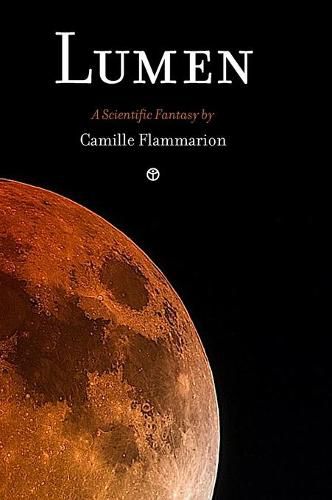Readings Newsletter
Become a Readings Member to make your shopping experience even easier.
Sign in or sign up for free!
You’re not far away from qualifying for FREE standard shipping within Australia
You’ve qualified for FREE standard shipping within Australia
The cart is loading…






This title is printed to order. This book may have been self-published. If so, we cannot guarantee the quality of the content. In the main most books will have gone through the editing process however some may not. We therefore suggest that you be aware of this before ordering this book. If in doubt check either the author or publisher’s details as we are unable to accept any returns unless they are faulty. Please contact us if you have any questions.
Camille Flammarion (1842-1925) can be called an Isaac Asimov or a Fred Hoyle of the 19th century. He was a well-renowned astronomer and meteorologist, who became famous by writing popular science books and early science fiction novels. He presented grand cosmological ideas in a way that distinguished him from another famous and contemporary Frenchman, namely Jules Verne, who was more interested in technology and geography. However, Flammarion also wrote many metaphysical non-fiction books, where he emerged as a religious freethinker with an eye for reincarnation and theosophy.
He published the astronomical magazine L'Astronomie from 1882, and in 1887 he founded Societe astronomique de France, which still exists. Craters on the moon and on Mars are named after him, and there is also an asteroid called 1021 Flammarion. Another asteroid called 141 Lumen is named after this remarkable novel.
In Lumen (1872), the scientific and metaphysical sides of Camille Flammarion are combined into a sublime unification. Lumen is a unique cosmological and religious speculation. The novel consists of a dialogue between a dead astronomer and his still living friend. The astronomer gives eye-witness reports about the wonders of the outer space and of the creatures inhabiting distant stars.
A skillful firework of imagination and ideas, and at the same time filled with facts in an almost bone-dry manner. Here are thoughts about relativity and the nature of time that shows us there were scientists many decades before Einstein that felt there was something not quite right with the absolute time and space in the classical mechanics of Newton.
Other classic novels by Camille Flammarion, likewise instrumental in creating the science fiction genre, are Uranie (1889), La Fin du Monde (1893; adapted for the screen by Abel Gance in 1931) and Stella (1897).
$9.00 standard shipping within Australia
FREE standard shipping within Australia for orders over $100.00
Express & International shipping calculated at checkout
This title is printed to order. This book may have been self-published. If so, we cannot guarantee the quality of the content. In the main most books will have gone through the editing process however some may not. We therefore suggest that you be aware of this before ordering this book. If in doubt check either the author or publisher’s details as we are unable to accept any returns unless they are faulty. Please contact us if you have any questions.
Camille Flammarion (1842-1925) can be called an Isaac Asimov or a Fred Hoyle of the 19th century. He was a well-renowned astronomer and meteorologist, who became famous by writing popular science books and early science fiction novels. He presented grand cosmological ideas in a way that distinguished him from another famous and contemporary Frenchman, namely Jules Verne, who was more interested in technology and geography. However, Flammarion also wrote many metaphysical non-fiction books, where he emerged as a religious freethinker with an eye for reincarnation and theosophy.
He published the astronomical magazine L'Astronomie from 1882, and in 1887 he founded Societe astronomique de France, which still exists. Craters on the moon and on Mars are named after him, and there is also an asteroid called 1021 Flammarion. Another asteroid called 141 Lumen is named after this remarkable novel.
In Lumen (1872), the scientific and metaphysical sides of Camille Flammarion are combined into a sublime unification. Lumen is a unique cosmological and religious speculation. The novel consists of a dialogue between a dead astronomer and his still living friend. The astronomer gives eye-witness reports about the wonders of the outer space and of the creatures inhabiting distant stars.
A skillful firework of imagination and ideas, and at the same time filled with facts in an almost bone-dry manner. Here are thoughts about relativity and the nature of time that shows us there were scientists many decades before Einstein that felt there was something not quite right with the absolute time and space in the classical mechanics of Newton.
Other classic novels by Camille Flammarion, likewise instrumental in creating the science fiction genre, are Uranie (1889), La Fin du Monde (1893; adapted for the screen by Abel Gance in 1931) and Stella (1897).